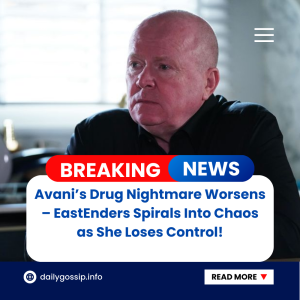This “movie” throws EastEnders fans into a frenzy of nostalgia, capitalizing on the show’s 40th-anniversary celebrations and the aftermath of a major character’s death to bring a legendary figure back into the spotlight – albeit in an unexpected way. The film opens with a montage of recent events in Walford, highlighting the return of familiar faces and the numerous callbacks to the soap’s rich history. This sets the stage for a reveal that will connect the past to the present in a shocking manner.
The death of Martin Fowler casts a long shadow over the early part of the film. His demise triggers a wave of grief and reflection among the residents of Albert Square, particularly the extended Fowler and Beale families. The film emphasizes how this event forces characters to confront their shared history, with numerous references to past events and deceased loved ones.
A poignant scene unfolds as Ruby Allen, Martin’s grieving partner, makes the difficult decision to sell his fruit and vegetable stall on Bridge Street. This stall, a symbol of the Fowler family’s legacy, is particularly significant to Ian Beale, as it was once operated by his father, Pete. The film underscores the emotional weight of this transaction, highlighting the continuity of family businesses and the cyclical nature of life in Walford.
However, the film quickly establishes that a traditional return for Pete Beale is impossible within the established narrative, as the character died in a car crash in 1993. This fact serves to heighten the audience’s curiosity and sets the stage for a more unconventional reappearance.
The narrative then shifts its focus to Pete Beale, a pivotal figure in EastEnders’ early years. The film provides a brief overview of his character for newer viewers, painting a portrait of a working-class family man deeply embedded in the fabric of Walford.
Pete was one of the original twenty-three characters introduced in 1985, a central member of the Beale family, and the operator of the fruit and vegetable stall. He lived in a nearby tower block with his wife, Kathy, and their son, Ian, and was a constant presence in Albert Square.
The film delves into some of Pete’s key storylines, highlighting his complex relationships and turbulent past. These include his bitter divorce from Pat Wicks, his violent confrontation with Kathy’s rapist, James Willmott-Brown, and the breakdown of his marriage to Kathy, which ultimately led to his departure from Walford with his new girlfriend, Rose Chapman.
The film reminds the audience of the abrupt and tragic end to Pete’s story: news reached his family that he and Rose had died in a car crash, leaving his son, Ian, to grapple with the loss. The film emphasizes the lasting impact of Pete’s death on Ian, who named his own son, Peter, in his father’s memory.
Here, the film takes a dramatic turn, shifting its focus from the fictional character to the real-life actor who portrayed him, Peter Dean.

The film presents a “reveal” of recent images of Peter Dean, now in his 80s. The presentation is designed to shock and surprise the audience, emphasizing how much the actor’s appearance has changed since his time on EastEnders. He is shown sporting a white beard and wearing a cap, a far cry from the character viewers remember from the 1980s and early 1990s.
The film describes how these images surfaced on social media, shared by a fan who encountered Dean at a reunion event in London. The reactions of fans are highlighted, emphasizing the widespread surprise and nostalgia evoked by seeing this “unrecognizable” figure from EastEnders’ past.
The film provides a brief update on Peter Dean’s career since leaving EastEnders. It mentions his appearances in projects such as the Lee Francis vehicle Bo’ Selecta, the comedy show Comedy Lab, the Danny Baker sitcom biopic Cradle to Grave, and the TV movie Nearly New. His participation in the reality series The Real Marigold Hotel is also noted.
The film then delves into the circumstances surrounding Peter Dean’s departure from EastEnders. It is revealed that his exit was not amicable, with reports of “irreconcilable differences” with the BBC. The film includes a clip or reference to Dean’s appearance on the ITV panel show Loose Women, where he discussed his departure, recounting a conversation with a producer who told him the writers could not find anything for his character to do.
The film concludes by reflecting on the passage of time and the changing landscape of the East End. It juxtaposes the fictional world of Walford with the real-life transformations of London’s East End, using Dean’s changed appearance as a visual representation of this passage of time.





